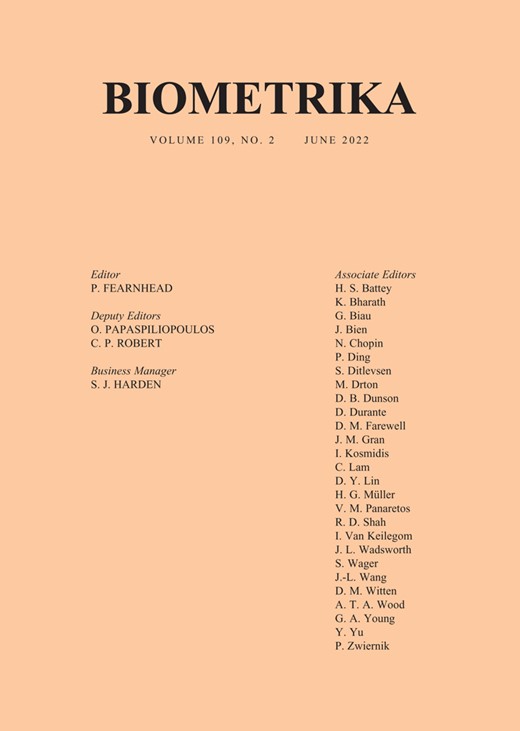-
Views
-
Cite
Cite
J Yin, S Markes, T S Richardson, L Wang, Multiplicative effect modelling: the general case, Biometrika, Volume 109, Issue 2, June 2022, Pages 559–566, https://doi.org/10.1093/biomet/asab064
Close - Share Icon Share
Summary
Generalized linear models, such as logistic regression, are widely used to model the association between a treatment and a binary outcome as a function of baseline covariates. However, the coefficients of a logistic regression model correspond to log odds ratios, while subject-matter scientists are often interested in relative risks. Although odds ratios are sometimes used to approximate relative risks, this approximation is appropriate only when the outcome of interest is rare for all levels of the covariates. Poisson regressions do measure multiplicative treatment effects including relative risks, but with a binary outcome not all combinations of parameters lead to fitted means that are between zero and one. Enforcing this constraint makes the parameters variation dependent, which is undesirable for modelling, estimation and computation. Focusing on the special case where the treatment is also binary, Richardson et al. (2017) proposed a novel binomial regression model that allows direct modelling of the relative risk. The model uses a log odds product nuisance model leading to variation-independent parameter spaces. Building on this we present general approaches to modelling the multiplicative effect of a continuous or categorical treatment on a binary outcome. Monte Carlo simulations demonstrate the desirable performance of our proposed methods. An analysis of the relationship between passenger class and survival for passengers on the Titanic further exemplifies our methods.



